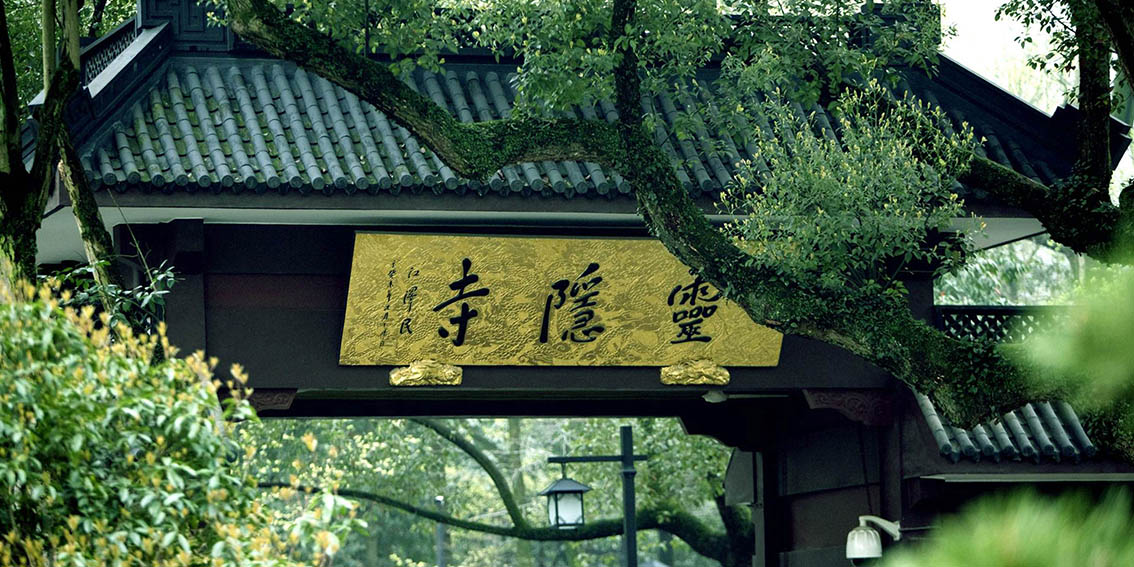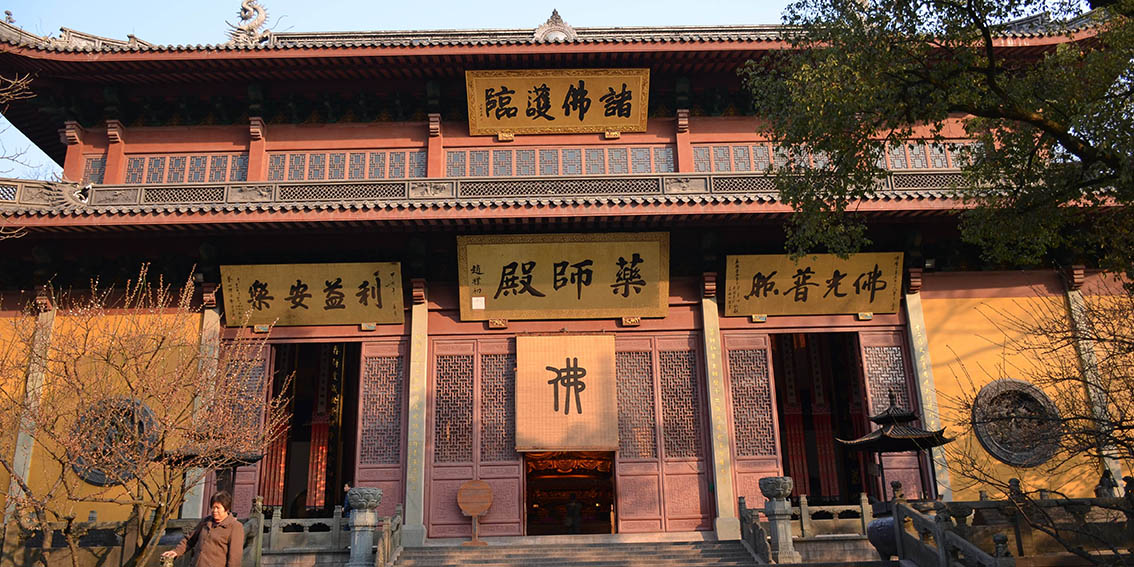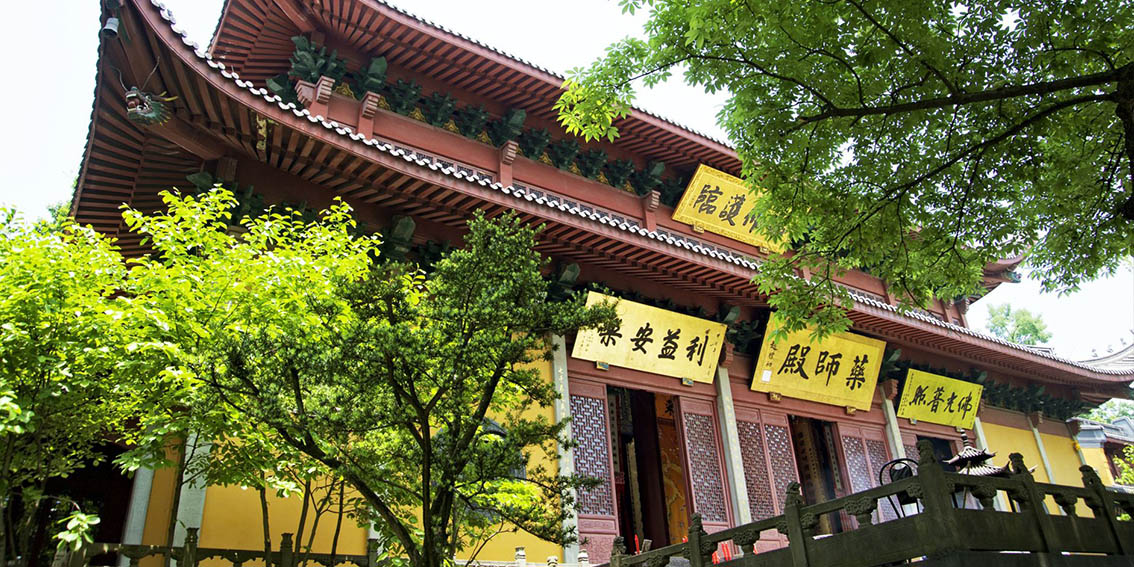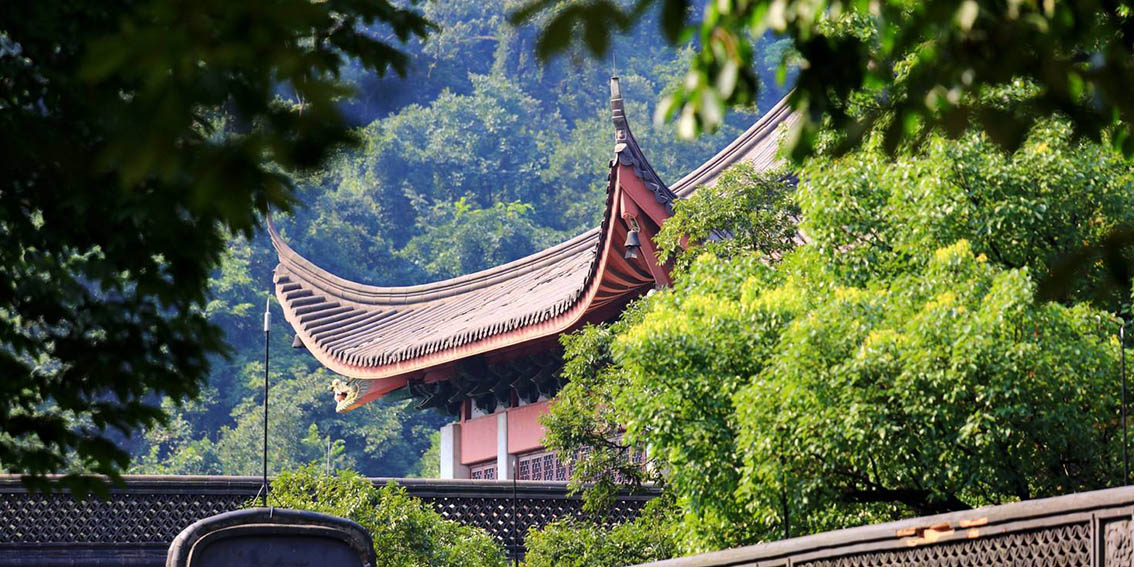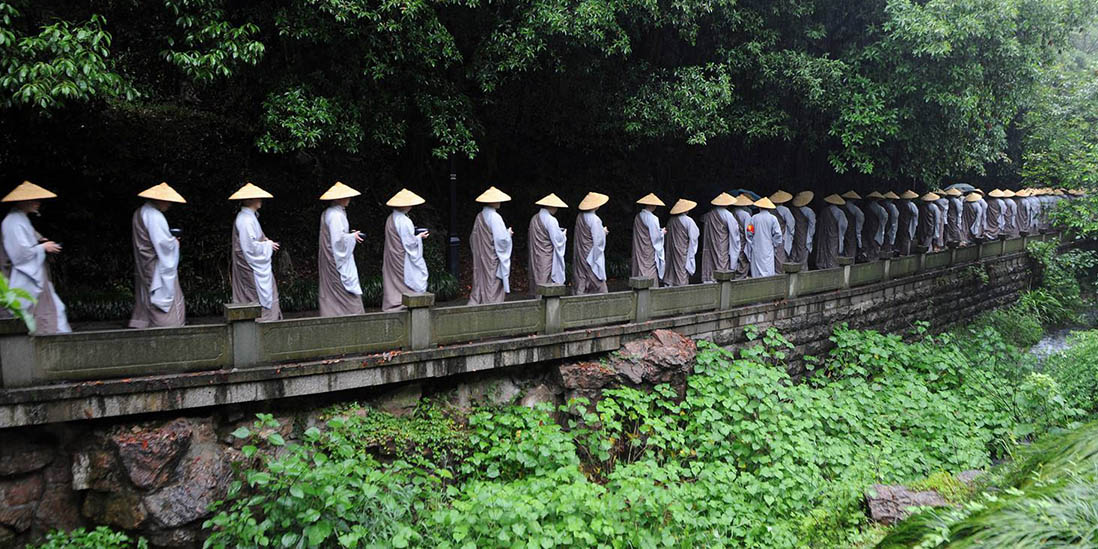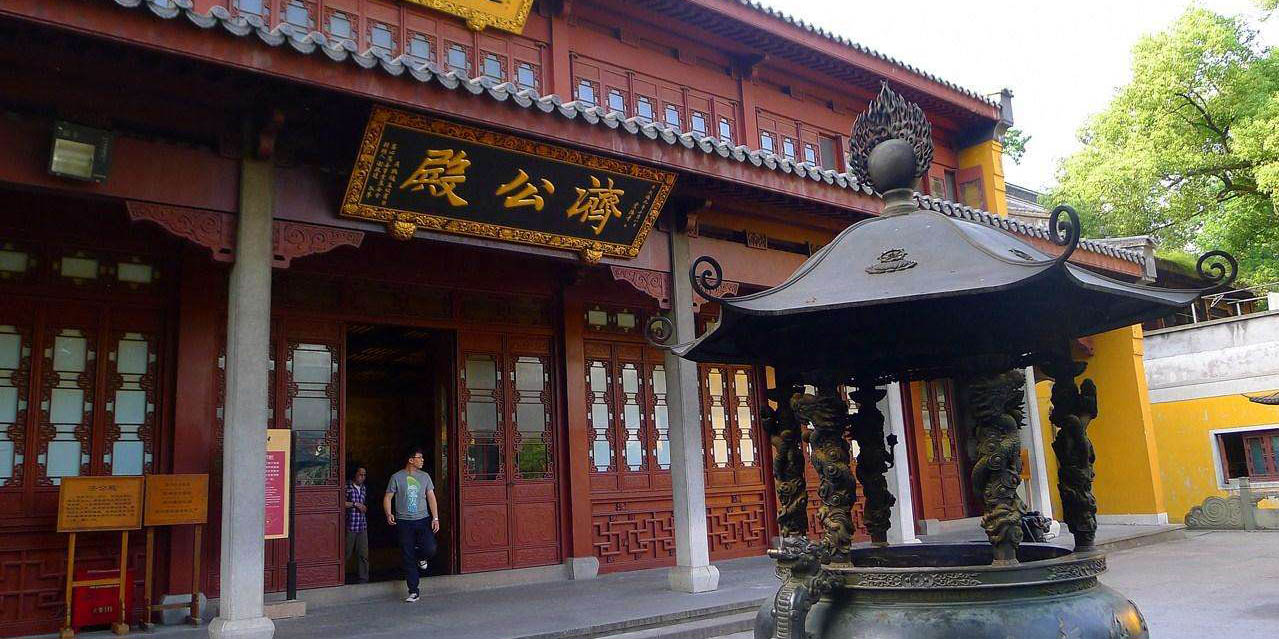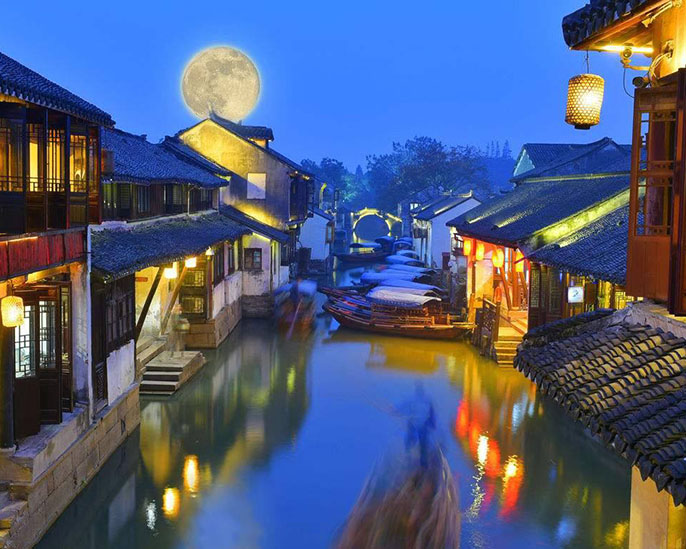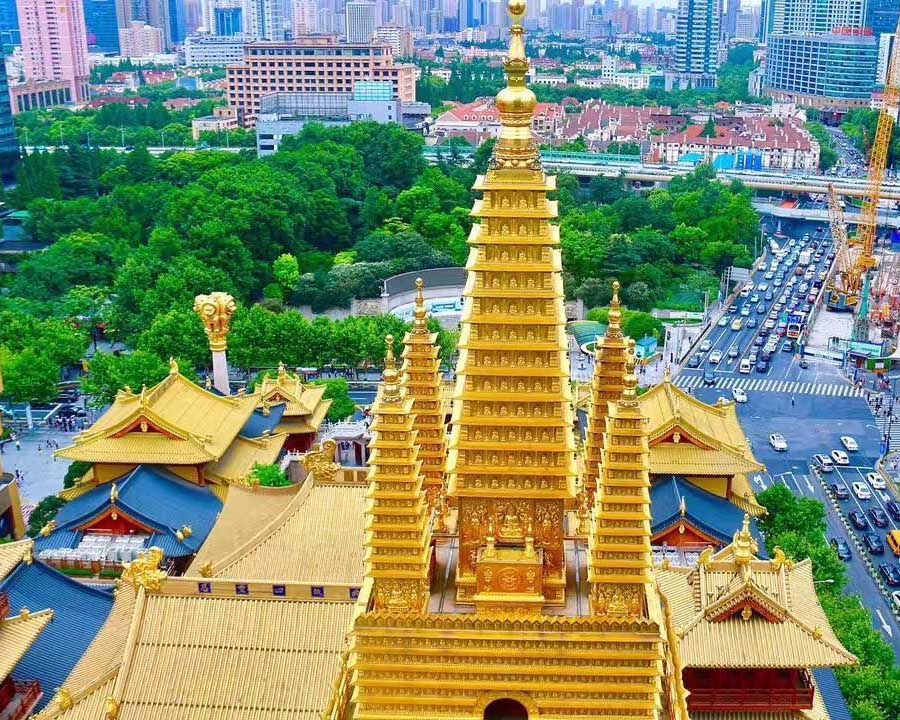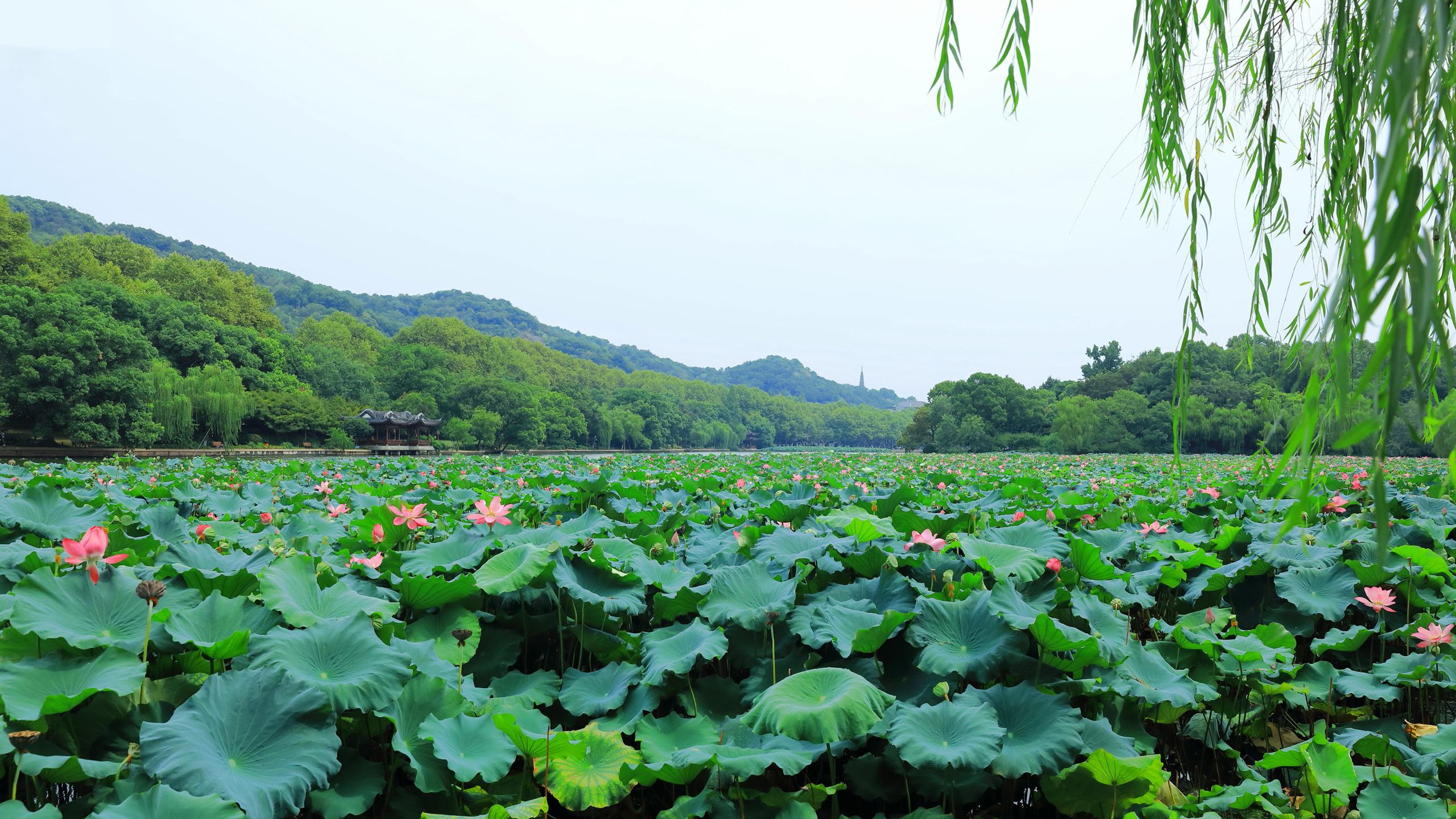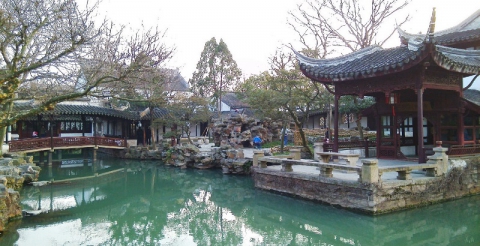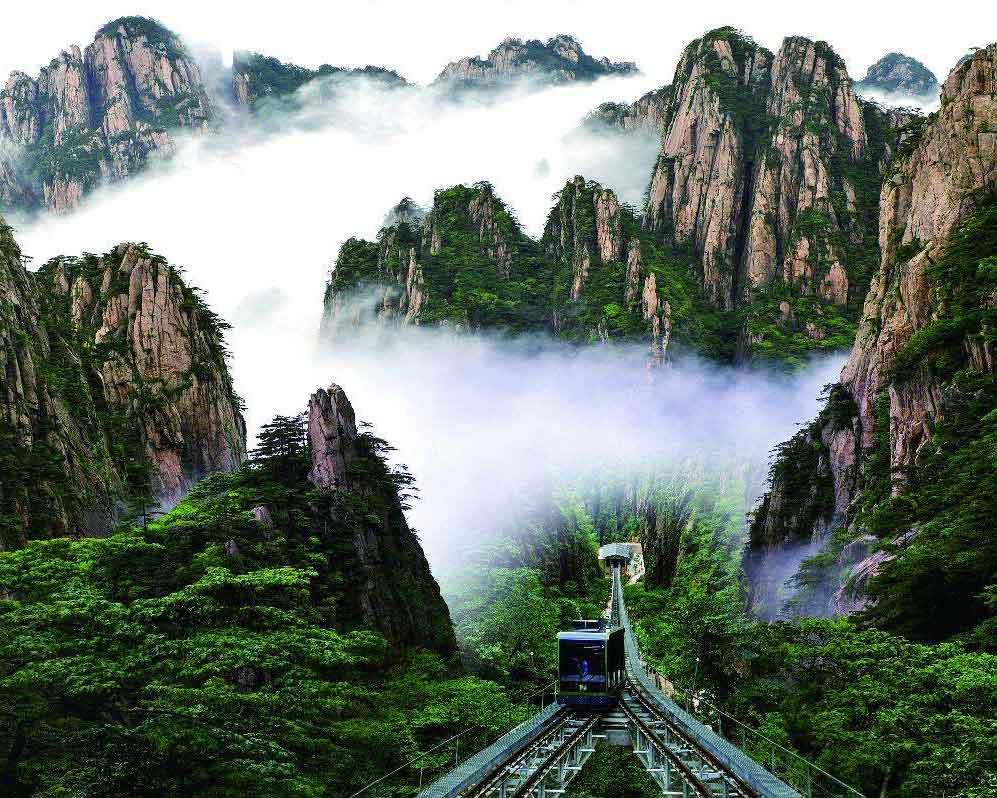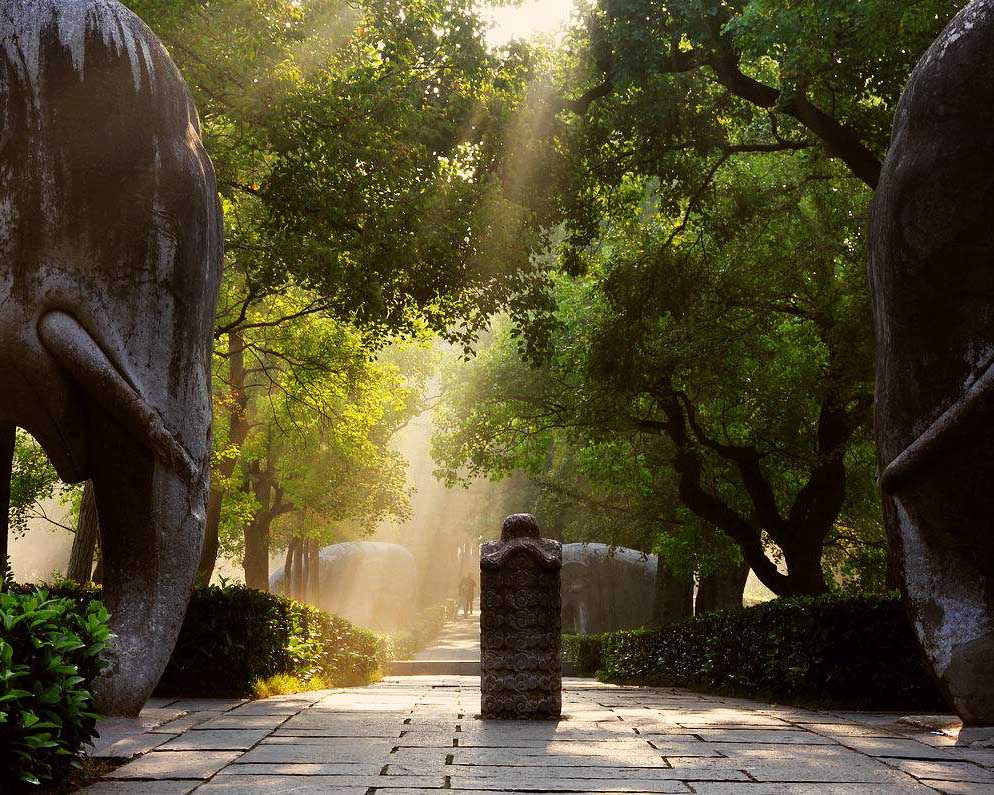Tour Code : C1791
Type :
City / Province : Hangzhou
Built in :
Lingyin Temple
Lingyin Temple is a Buddhist temple of the Chan sect located north-west of Hangzhou, Zhejiang Province, People's Republic of China. The temple's name is commonly literally translated as Temple of the Soul's Retreat.
It is one of the largest and wealthiest Buddhist temples in China, and contains numerous pagodas and Budddhist grottoes.The monastery is the largest of several temples in the Wulin Mountains, which also features a large number of grottos and religious rock carvings, the most famous of which is the Feilai Feng (literally "the peak that flew hither").
Lingyin Temple
Layout of Lingyin Temple
The main axis of Lingyin follows a traditional Song dynasty five-hall Chan sect structure. The main axis stretches up the Lingyin Hill. However, the five-hall axis is a recent recreation. Only the front three halls are a part of the Qing dynasty axis.
Hall of the Heavenly Kings: The formal entrance of the temple is the Hall of the Heavenly Kings. This hall is a double-eaved building. The front of the building carries a plaque ( literally "Chan temple of the Clouds and Forests"), written by the Kangxi Emperor. The principal statue in this hall is that of the Maitreya Buddha in his manifestation as the cloth bag monk, or the Laughing Buddha. At the back, facing up the hill, is the Skanda Buddha, or Weituo as he is known in Chinese. This statue dates from the Southern Song Dynasty. Being 800 years old this is the oldest and most important statue in the temple. Arranged along the left and right are the Four Heavenly Kings. The ceiling is ornately painted and decorated with phoenixes and dragons.
Lingyin Temple
The four heavenly kings are imposing. Visitors to the temple are often impressed by the size and majesty of the entrance hall and its statues of the heavenly kings. Indeed, the hall of the Heavenly Kings at the Lingyin Temple is as large or larger than the main hall at many temples, reflecting its status as the centre of Buddhism in south-eastern China.
Lingyin Temple
The Hall of the Heavenly Kings is the formal entrance to the temple. However, this entry has been closed in recent years, with visitors funneled instead through side doors, where separate ticket offices are set up for admission to the temple.
Grand Hall of the Great Sage: The second and principal hall is the Mahavira Hall, or the Grand Hall of the Great Sage. It is separated from the Hall of the Heavenly Kings by a large courtyard, featuring a raised lawn bordered with trees. To the left of the courtyard stands the Hall of the Five Hundred Arhats. The Grand Hall of the Great Sage is triple eaved and stands 33.6 metres tall. It houses, as is traditional, a statue of Shakyamuni, the historical Buddha. The present statue was carved in 1956 from camphor wood in Tang Dynasty style and coated with 60 taels of gold. It is the largest wooden Buddhist statue in China. At the back of the main statue is a statue of Guanyin, backed by a large screen that features the carved images of some 150 Buddhist personalities, including the pilgrims of the Journey to the West, Daoji, and arhats. Arranged along the sides of the hall are images of the 18 principal arhats, and other prominent Buddhists. The interior of the hall reaches about 30 metres, with a gold-painted ceiling featuring base relief images of traditional Buddhist symbols.
Lingyin Temple
The Hall of Five Hundred Arhats, also a modern addition, faces onto the western side of the courtyard in front of the main hall. The building has a complex floor plan, shaped like a Buddhist swastika. Along the arms of the swastika are arranged the five hundred arhats as slightly larger-than-life bronze statues. Each statue is seated on a unique ornate seat. At the centre, where the arms of the swastika join, stands a bronze canopy housing statues of four bodhisattvas representing the four cardinal directions. This is currently the tallest solid bronze structure in the world.
Lingyin Temple
The Feilai Feng Grottoes
Feilai Feng, or "the Peak that Flew Hither", also commonly translated as "Flying Peak", is located in front of the temple proper. The peak is so-named because it is made of limestone, giving it a craggy appearance very different from the surrounding mountains. Legend holds that the peak was originally from India (with some versions suggesting that it is Vulture Peak), but flew to Hangzhou overnight as a demonstration of the omnipotence of Buddhist law. A large number of carvings dot the surface of the peak. More are located in various caves and grottoes throughout the peak. Within the main cave, dedicated to the bodhisattva Guanyin, there is a crack in the ceiling of the cave that stretches up to the surface, so that a person standing at a certain position can see a sliver of sunlight. This is known as the "one thread of heaven".
Got Question & Quick Answer
![]()
![]()
CONTACT INFO
PHONE:
EMAIL:
marcopolo@chinatoursnet.comWhatsApp:+86-13683536536iMessage:+86-13683536536
ADDRESS:
Room 208,Business Building AQiantongtian.Longgang Road,Haidian district,Beijing
WeChat:chinatoursnetSkype:chinatoursnet@outlook.com
WHY CHOOSE US

1:We are in Beijing
2:No hidden fees
3:Downtown hotel
4:professional tour guildes and drivers
5:Flexible tour time,private tour group,customized tour service
6:free mineral water
7:Guarantee enough visiting time
8:Guarantee your satisfactory with your choice
